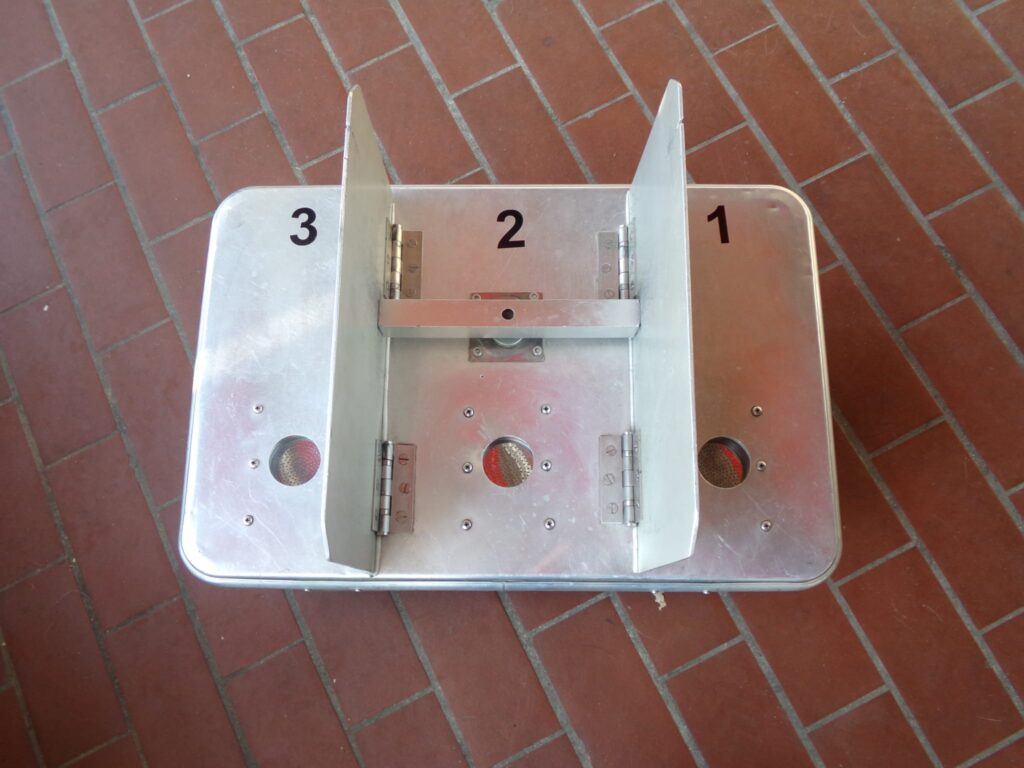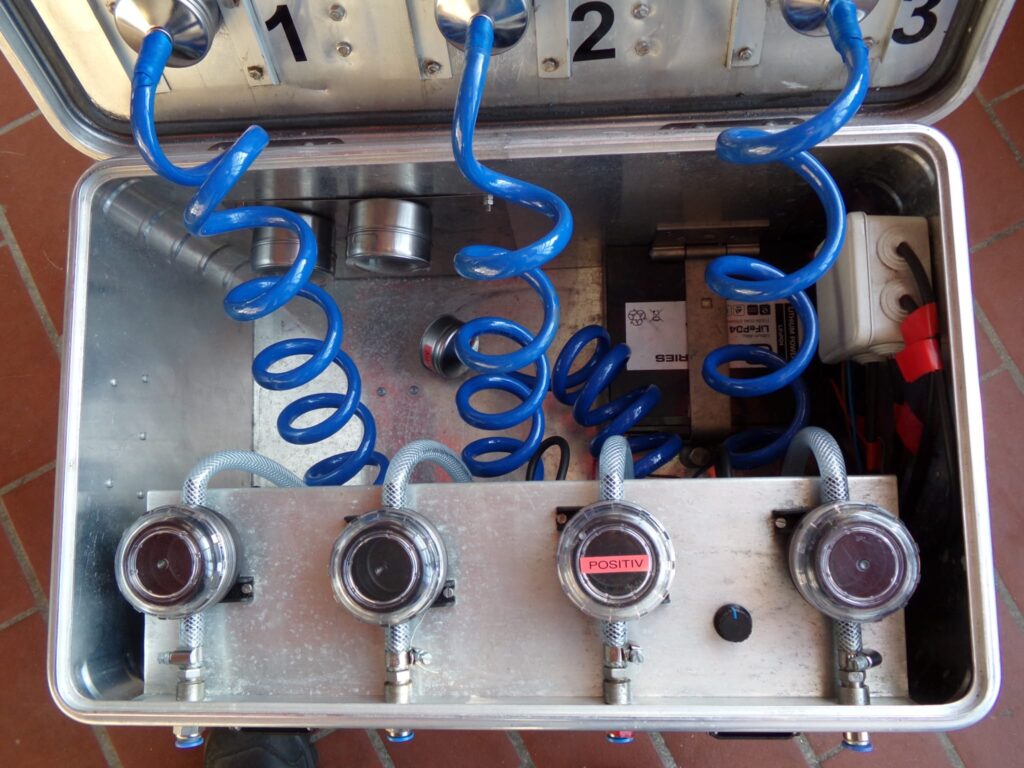Horst-Dieter Träger, a retired experienced dog handler from customs in Bremerhaven and K9 ambassador, has made a name for himself as an innovative problem solver. With his combination of expertise in the field of detection dogs and his passion for technical innovations, he has developed a new method for drug detection. This method makes it possible to detect drugs in shipping containers more efficiently and quickly. We took this as an opportunity and conducted a two-part interview with him. In the first part you will find out more about the search method he developed.
The method works like this: The air from each container is directed via a hose to a specially designed device that sucks in and filters the air. This device, in the form of a box, passes the filtered air on to the sniffer dogs. They then examine the air samples through openings at the top of the box and signal if they encounter drugs. Thanks to the innovative process, up to three containers can now be inspected simultaneously in a very short time. This method is already being used successfully at the main customs office in Bremen.
K9andSports: What was the trigger for the development of this new method for searching for drugs in the port of Bremerhaven and how did the idea develop?
I've been thinking about how dogs can be used more effectively for sniffer work on containers. Since an external search of containers is hardly possible and unloading the containers is very expensive, another solution for sniffer dogs had to be found. Since the containers usually have long transport routes, even very good packaging cannot prevent odors from escaping. Now you “just” have to supply the dogs with the air inside the container.
K9andSports: What technical challenges had to be overcome in order to successfully implement the process of extracting air from the containers and then examining it with sniffer dogs?
It had to be ensured that the inside air, which already had few odor particles, was not “diluted” by outside air. I then built a case with small suction pumps. Thin tubes were then passed through the rubber seals of the containers in order to supply the dogs with the air inside the container using a suction case.
K9andSports: How exactly does the air extraction technology work and how is it ensured that the dogs can reliably detect traces of drugs in the extracted air?
The dogs were then sensitized to the smallest amounts of drugs/adhesions in a pilot project and accustomed to the suction box. Some dogs initially had slight problems with air being blown at them. However, it was only a short process of getting used to it. With the suitcase we can search three containers at the same time. The dog then checks the three air outlet openings very quickly.
K9andSports: What advantages does this new method offer compared to previous drug detection methods in the port, especially in terms of efficiency and time savings?
It is significantly cheaper than unloading and we can inspect significantly more containers. Our goal is to achieve a high level of control density.
K9andSports: Wie wird sichergestellt, dass die abgesaugte Luft aus den Containern repräsentativ für den gesamten Containerinhalt ist und keine Drogenspuren übersehen werden?
Since these are mostly so-called refrigerated containers (often bananas and other tropical fruits), the air inside the containers is constantly circulated. This ensures that we always have the odor particles from the entire load available.
K9andSports: How are the affected parties, such as cargo ship operators or logistics companies, reacting to the introduction of this new drug detection method?
You have no problems with it. The containers usually stay in the port for a few days. During this time, we check the containers so that there are no delays for the logistics companies.
K9andSports: How was the technology tested in practice and what experiences were gained?
As part of a pilot project, larger quantities of drugs were available to us for training and testing. We then filled the containers with these and were impressed that the dogs detected the drugs through reliable display behavior after only a short time when the drugs had been in the container. The procedure is now used daily.
K9andSports: How does this method differ from other port drug detection techniques and what advantages and disadvantages does it offer in comparison?
Until now, the containers were primarily checked using X-ray technology or unloading. The suction method now gives us another way to inspect more containers. All methods have their place and are also effective. Our ultimate goal is to inspect as many containers as possible. We sniffer dog handlers have made a contribution to this.
K9andSports: Is there a possibility that this technology could be used for other purposes or in other areas of law enforcement in the future?
There will certainly be other possible uses and work is underway on them. Since I have been retired since February, other colleagues have been entrusted with this.
This project was my last job for the Federal Customs Administration ;-).


